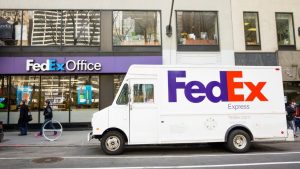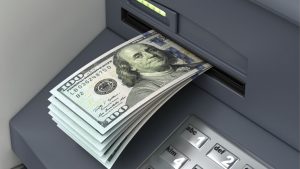Delivery routes can be highly profitable businesses that provide stable yet passive income to the business owner.
We are going to be discussing the 4 best types of delivery routes you can own.
They are as follows:
For each of the four routes highlighted above, we are going to answer the following:
- What are they?
- Why are they great?
- What are key risks of owning them?
- What is the expected ROI?
- Where can you buy them?
- Where can you learn more on how to get started?
Honorable Mention: Another type of popular delivery route option is a personal services route, such as a pool servicing route, landscaping route, mobile pet grooming route, etc. I have not included these types of routes on my list because they often require specialized skills. But if you have the interest and know-how to operate them, they can be a great option too.
With that, let’s get into it!
This post may contain affiliate links. If you click on a link and complete a transaction, I may make a small commission at no extra cost to you.
The information contained in this post is for informational purposes only. It is not a recommendation to buy or invest, and it is not financial, investment, legal, or tax advice. You should seek the advice of a qualified professional before making any investment or other decisions relating to the topics covered by this article.
FedEx Routes

What is a FedEx Route?
A FedEx route is a package delivery route offered by FedEx to independent businesses.
FedEx routes come in basically two forms: (i) a FedEx Ground Pickup and Delivery (P&D) route which delivers to homes and businesses within the defined territory; and (ii) a FedEx Ground Linehaul route which provides long-distance transport.
When you own a FedEx P&D route (which is the simpler and more accessible of the two), you have rights to an exclusive FedEx territory and make money off package deliveries made in your territory.
These territories are localized and deliveries are usually made with vans or small trucks, making them less complex and risky than FedEx linehaul routes, which require semi-trucks and drivers with commercial drivers licenses.
Source: FedEx
Why is a FedEx Route Great?
First, you get to partner with FedEx, a massive company with incredible brand recognition. Add on top of that the potential for great profits and passive income (if you structure it right) and you have a compelling business model.
Plus, the business is simple: you just need to make sure your deliveries happen on time, every time.
No need to worry about customers, competition, marketing, etc. FedEx has all of that covered.
What Are Key Risks to Owning a FedEx Route?
A FedEx route can be expensive, so you have a lot at stake. According to Route Consultant an average priced FedEx ground route requires a down payment of approximately $150,000-$200,000, plus $75,000 in working capital.
Plus, you have to make sure you have a solid team of drivers and managers (especially if you want to run this business as passively as possible). Drivers and managers may quit – you need to be prepared for that and do what you can to prevent it.
You also need to account for repairs and maintenance on your trucks and must generally plan for the unexpected. For example, if there is a spike in deliveries due to seasonality or other reasons, you need to handle it seamlessly (many owners have extra drivers or trucks on hand to handle these types of situations).
Finally, you need to be aware that FedEx calls the shots – you need to follow FedEx’s rules and sometimes those rules can change. In fact, many FedEx owners felt the consequences of FedEx rule changes in recent years.
What is the Expected ROI of a FedEx Route?
So how good is the ROI for a FedEx delivery route?
I took a sample of ten FedEx routes for sale in bizbuysell.com (one of the leading online sites for buying and selling businesses) and found an average ROI of 26.1%. See my chart in the article linked above for more details.
Where Can I Buy a FedEx Route?
Here is a list of sites that offer FedEx routes for sale:
Where Can I Learn More?
For more info on buying FedEx routes, including how to finance them, down payment requirements, and other info to help you get started, check out my article on How to Buy a FedEx Route in 5 Easy Steps
Bread Routes

What is a Bread Route?
A bread route is a bread distribution route within a defined territory.
Bread routes are typically owned by independent businesses that have been granted the right to distribute bread products from a particular bread supplier within that territory.
You make money owning a bread route by earning a commission (usually around 20%) on your sales to various businesses in your territory who buy bread from you. Because you are the distributor for the bread company, you can buy bread from the company at wholesale prices and resell that bread to your accounts at a designated mark-up (which equals your commission).
In many cases, your territory is “protected,” which means no one else can sell your brand of bread to retailers in your area.
Why is a Bread Route Great?
Bread routes are great because they can be profitable and are established businesses that are “ready to go.” And if you structure them properly (i.e., hire a driver), you can make them provide passive income to you.
They also operate under a well-established business model, so there is a vibrant marketplace for them.
This means you can expand your business by simply buying more bread routes and you can sell them easily when the time comes. Finally, you have the independence that comes with owning your own business.
What Are Key Risks to Owning a Bread Route?
Bread routes can expensive to buy (see my article to get a general sense of cost), can be physically demanding (loading and unloading bread is not easy), and can be high maintenance if you run the routes yourself (vacations can be rare).
Plus, your product can go stale or expire and your delivery trucks may need maintenance from time to time.
Finally, you are ultimately beholden to the bread company, so you do not have full control of your business. In some cases, that means your route may be unprotected or there may be a shortage of bread, which could impact your ability to meet the demands of your bread buyers.
What is the Expected ROI of a Bread Route?
How much ROI can a bread route generate?
According to my sampling of ten bread routes on routesforsale.net, they can provide ROIs of around 46%! Now bear in mind that most of these bread routes were probably owner-operated, so if you want to make the business more passive and hire drivers, that ROI will go down.
Where Can I Buy a Bread Route?
Here is a list of sites offering bread routes for sale:
Where Can I Learn More?
For more info on bread routes, including how much they cost, how much they make, how to finance them, and their down payment requirements, check out my article on Buying a bread Route: A Beginner’s Guide
Vending Machine Routes

What is a Vending Machine Route?
A vending machine route business is a business where you have one or more vending machines in various locations and earn money from sales generated by those vending machines.
A large part of the business involves running periodic routes to these locations. During these routes, you stock up your machines with inventory and any coins needed for change. You also collect money from your vending machines.
Why is a Vending Machine Route Great?
Vending machine routes can be great businesses because they can generate great income with relatively low starting costs. And because you can hire route runners, the business can be operated in a mostly passive way.
Plus, it is simple to expand your vending machine business: You can do it one machine at a time.
Eventually, you can wind up with a fleet of vending machines that are each generating terrific income for you. Finally, unlike some of the other delivery route businesses we discussed, you are a completely independent operator. You can run your vending machine business in whatever way you deem fit.
What Are Key Risks to Owning a Vending Machine Route?
The key risks to owning a vending machine business are changing tastes in food (candy bars aren’t as popular as they once were). But there are healthy vending options that have been gaining traction in recent years.
You also face competition because of the relatively low cost of entry. Because of this, finding good locations can be a challenge.
Finally, you need to make sure your vending machines are not outdated. In the past, cash-only vending machines were acceptable, but nowadays cashless payment options are becoming almost a requirement to attract customers.
What is the Expected ROI of a Vending Machine Route?
How strong is the ROI for vending machines?
Based on my sampling of ten vending machine businesses on bizbuysell.com, I found the average cash flow to be 49.2%!
As with bread routes, most of these vending routes were probably owner-operated, so if you want to make the business more passive and hire route runners, that ROI will go down.
Where Can I Buy Vending Machines?
The following companies sell new vending machines:
The following companies sell used vending machines:
If you want to buy entire vending machines routes, you can check out these sites:
Where Can I Learn More?
For more info on how to get started with a vending machine business, check out my article on Vending Machines as Passive Income: A Beginner’s Guide
ATM Machine Routes

What is an ATM Route?
An ATM route business is a business where one or more ATMs generate revenue for the business owner through fees charged to customers when they withdraw money from the ATMs.
Why is an ATM Route Great?
ATM routes can be great businesses because they have low starting costs, can generate strong profits, and can be structured to provide you with passive income (just hire a company that will replenish your machines with cash when needed, so you don’t have to run the routes).
And unlike vending machines, you don’t need to stock up on 14 different varieties of chips, candies, chocolates, and beverages. The only product you need to worry about is cash.
They can also be easy to grow (just buy more ATM machines and place them in well-trafficked areas).
What Are Key Risks to Owning ATM Route?
The decline in the use of cash is a real risk of this business.
You also need to be aware of the risk of theft (you have machines filled with cash, after all). Finally, many banks do not like opening business accounts for ATM route owners because of certain regulatory concerns relating to privately owned ATMs.
What is the Expected ROI of an ATM Route?
ATMs can generate gross ROIs of over 200%.
Now there will be additional costs you have to deduct from your gross revenue, including possible revenue sharing with the owner of the location where you placed the ATM, but those costs will be far less than 50% of your gross revenue. So if you cut your ROI in half, that still gives you over a 100% ROI.
Now I didn’t make this up. This type of high ROI is supported by information from companies in the ATM industry. According to Liebermann Companies, you may be able to make your money back on an ATM within 6 months of buying, which equals a 200% ROI.
Where Can I Buy ATMs ?
You can buy ATM machines from a number of companies that specialize in ATM sales. Some of the prominent sellers of ATMs include:
- ATM Money Machine
- ATM Brokerage
- Mobile Money
- ATM Machines
- ATM Mega Store
- Best Products Sales & Service
- eBay
If you want to buy entire ATM routes, you can check out these sites:
Where Can I Learn More?
For more info on how to get started with an ATM route business, check out my article on How to Start an ATM Business: A Step-by-Step Guide
Conclusion
So there you have it – four of the best delivery route businesses. Hope you found the information on these great businesses helpful.
If you are interested in learning more about any of them, I encourage you to check out my more in-depth articles discussing how to get started in each of them.

